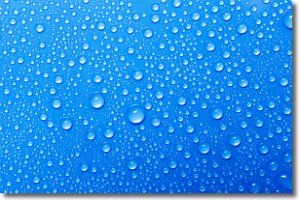Weather Alert in Washington
Fire Weather Watch issued August 11 at 1:53PM PDT until August 13 at 11:00PM PDT by NWS Spokane WA
AREAS AFFECTED: Foothills of Northeast Washington; Colville Reservation; Okanogan Valley; Methow Valley; Central Washington Cascade Foothills; Waterville Plateau; Western Columbia Basin; Eastern Columbia Basin / Palouse / Spokane Area; Lower Palouse / Snake River
DESCRIPTION: The National Weather Service in Spokane has issued a Fire Weather Watch for wind and low relative humidity, which is in effect from Wednesday morning through Wednesday evening. * Affected Area: Foothills of Northeast Washington (Zone 701), Colville Reservation (Zone 702), Okanogan Valley (Zone 703), Methow Valley (Zone 704), Foothills of Central Washington Cascades (Zone 705), Waterville Plateau (Zone 706), Western Columbia Basin (Zone 707), Eastern Columbia Basin -Palouse - Spokane Area (Zone 708) and Lower Palouse -Snake River (Zone 709). * Winds: West 15 to 25 mph with gusts up to 35 mph. * Relative Humidities: 13 to 25 percent. * Impacts: Rapid spread of any new or existing fires.
INSTRUCTION: A Fire Weather Watch means that critical fire weather conditions are forecast to occur. Listen for later forecasts and possible Red Flag Warnings.
Want more detail? Get the Complete 7 Day and Night Detailed Forecast!
Current U.S. National Radar--Current
The Current National Weather Radar is shown below with a UTC Time (subtract 5 hours from UTC to get Eastern Time).

National Weather Forecast--Current
The Current National Weather Forecast and National Weather Map are shown below.

National Weather Forecast for Tomorrow
Tomorrow National Weather Forecast and Tomorrow National Weather Map are show below.

North America Water Vapor (Moisture)
This map shows recent moisture content over North America. Bright and colored areas show high moisture (ie, clouds); brown indicates very little moisture present; black indicates no moisture.

Weather Topic: What is Condensation?
Home - Education - Precipitation - Condensation
 Next Topic: Contrails
Next Topic: Contrails
Condensation is the process which creates clouds, and therefore
it is a crucial process in the water cycle.
Condensation is the change of matter from a state of gas into a state of liquid,
and it happens because water molecules release heat into the atmosphere and
become organized into a more closely packed structure, what we might see as
water droplets.
Water is always present in the air around us as a vapor, but it's too small for
us to see. When water undergoes the process of condensation it becomes organized
into visible water droplets. You've probably seen condensation happen before on the
surface of a cold drink!
Next Topic: Contrails
Weather Topic: What are Cumulonimbus Clouds?
Home - Education - Cloud Types - Cumulonimbus Clouds
 Next Topic: Cumulus Clouds
Next Topic: Cumulus Clouds
The final form taken by a growing cumulus cloud is the
cumulonimbus cloud, which is very tall and dense.
The tower of a cumulonimbus cloud can soar 23 km into the atmosphere, although
most commonly they stop growing at an altitude of 6 km.
Even small cumulonimbus clouds appear very large in comparison to other cloud types.
They can signal the approach of stormy weather, such as thunderstorms or blizzards.
Next Topic: Cumulus Clouds
Current conditions powered by WeatherAPI.com




